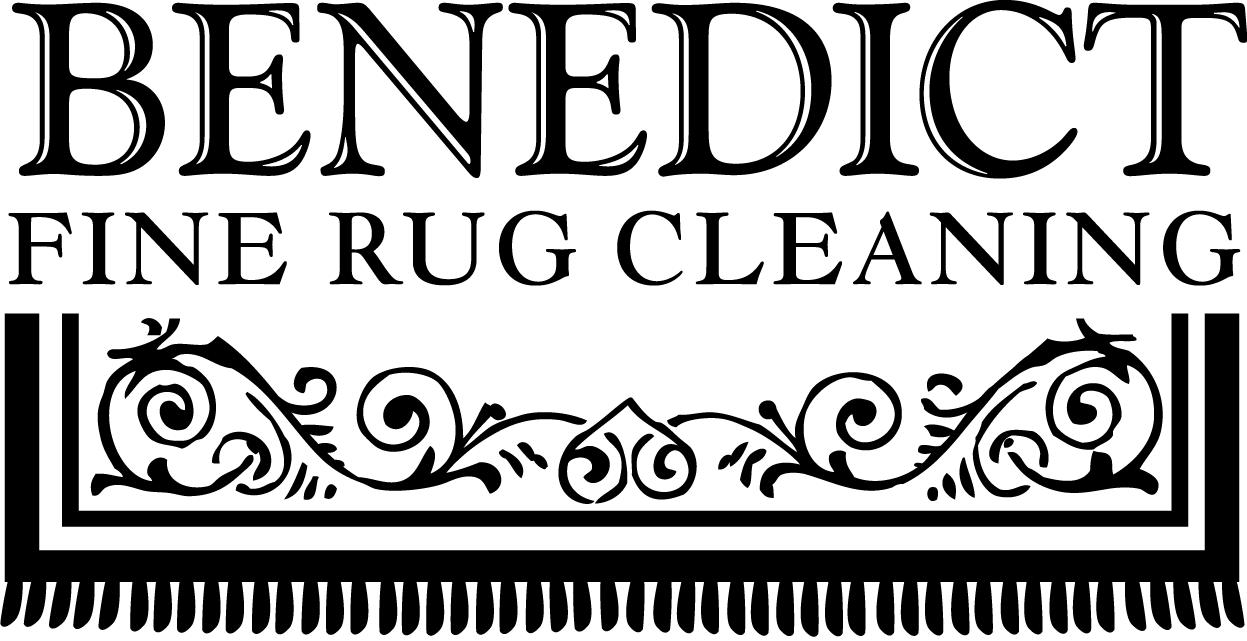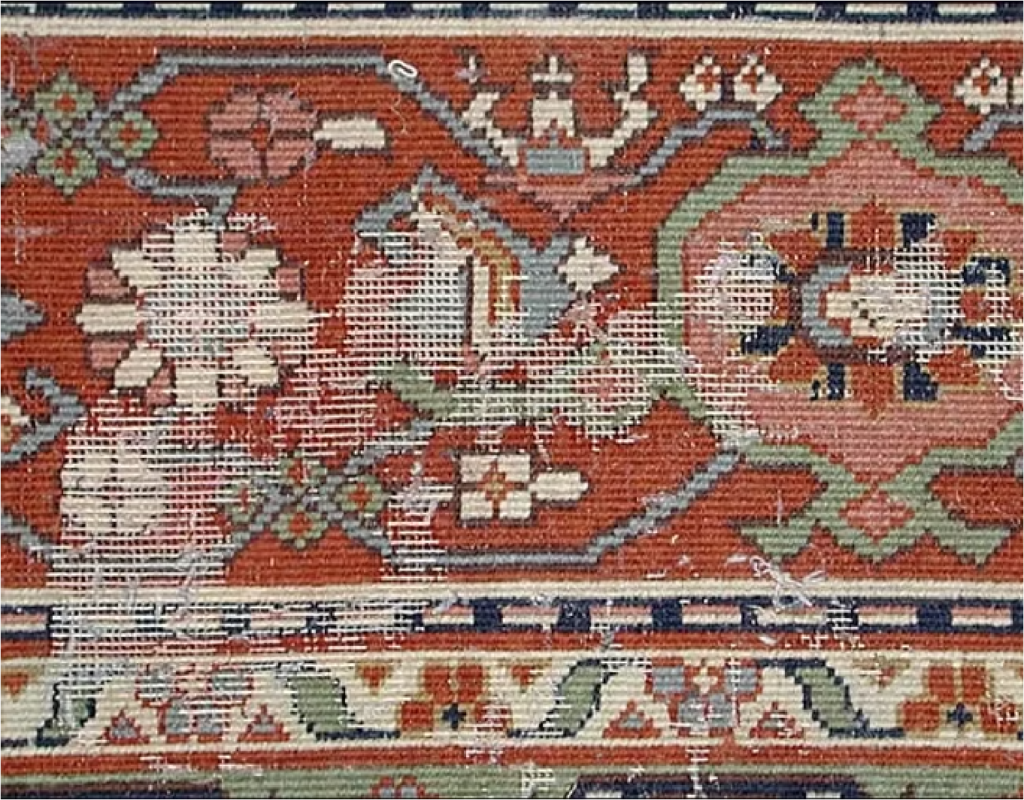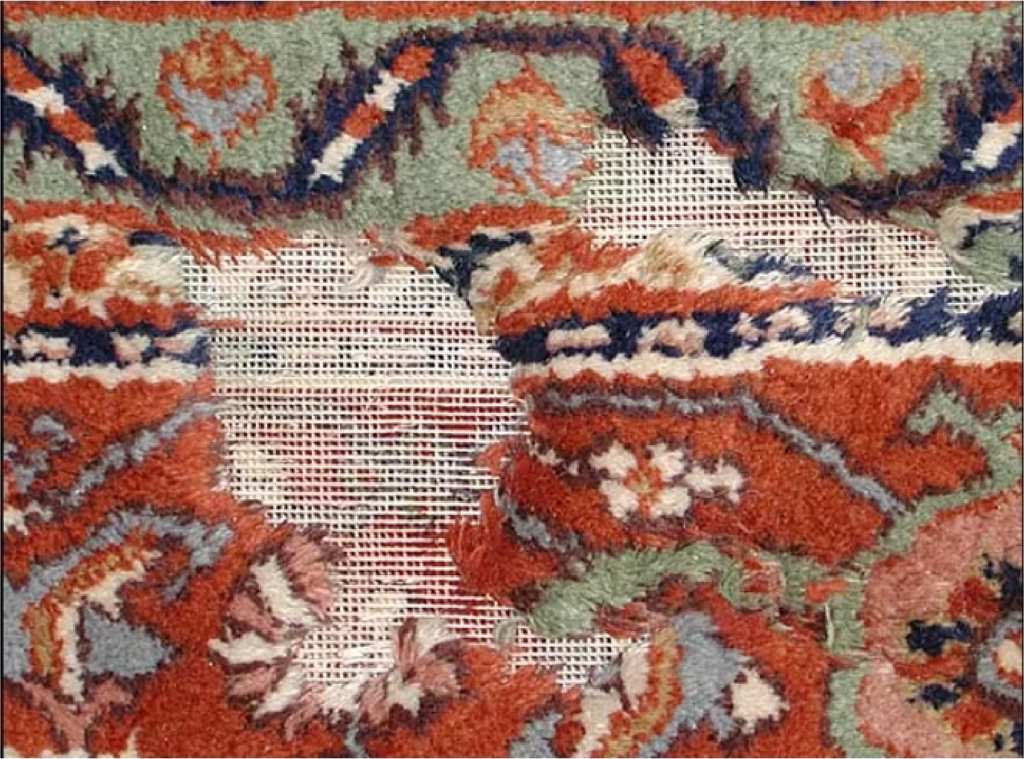We are Moth Treatment and prevention experts!
Benedict Fine Rug Cleaning is very experienced with managing moth issues in rugs. Contact us for more information about our moth mitigation and treatments services.
Moth Damage
Flying clothes moths do not eat your rugs, their larva does. Females lay hundreds of eggs each which hatch into larvae that consume wool, fur, feather, and silk fibers. Moths and their larvae thrive in dark, undisturbed areas where a rug gets little traffic and/or is not often vacuumed. A room you frequently use can get moths under the furniture if it is not vacuumed. Moth larva especially like to bury near the feet of your furniture where the vacuum never goes. This is why you should vacuum your entire wool rug. Use the vacuum tool to get around the legs of your furniture. An infestation often involves more than one rug and can spread to (or from) woolens or furs hanging in closets or sweaters stored in a drawer. A rug damaged by moths is not difficult to repair but reweaving a large area of the rug can be expensive. Moth problems are why we recommend you clean your rugs at least once every two years.
To identify the presence of moths, look for one or more of these signs:
- flying moths — the common clothing moth (tineola bisselliella) is the villain. It’s small, 3/8″ long or less, and is usually silvery tan or soft brown in color. This moth flies slowly but with a rapid flutter of small wings. If you try to snatch one out of the air, the clothes moth folds its wings and drops to the floor.
- bare spots in the pile — often moth larvae will prefer the taste of one color yarn over another, and so the bare spots may involve some specific colors but not others.
- webs — white gossamer filaments covering a patch of the rug’s pile (often only present with a bad infestation).
- cocoons — 1/8″ diameter x 1/2″ long slightly fuzzy cylinders usually the same color as the rug’s pile (larvae camouflage their cocoons to blend in with the color of the wool that surrounds them).
- larvae in the pile — slender, white, worm-like moth larvae about 3/8″ long can sometimes be seen just after hatching, before they’ve constructed cocoons. It is the larvae that actually eat the wool.
- sand-like particles down in the pile of the rug — this material, often tan or brown in color, regular in size, and granular in look, is the excretion of the larvae.
- broken/loose plies — where the larvae have chewed through yarn overcastings or bindings.
To Prevent Moth Damage:
- Vacuum the entire face of the rug weekly if possible. At least several times a year, vacuum the back side of the rug and the pad and floor underneath.
- If the rug is too large to handle, flip the edges over, and vacuum at least one to two feet in along the borders on the back side of the rug. The corresponding areas on the pad and floor should also be vacuumed.
- Vacuum around the legs of your furniture. Moth larva like to bury around the legs of furniture because it is not typically vacuumed.
- Be aware that moth balls, flakes, or crystals (naphthalene or paradichlorobenzene) are ineffective in moth control for rugs. These materials act only as a minor repellent to moths. They do not kill moth larvae, and the naphthalene odor can be unpleasant and difficult to remove from the rug. Cedar scent is useless as a prevention for moth damage.
- Any place the vacuum cannot reach, such as areas of the rug under furniture, or a rug hung on the wall, can be sprayed with a household, non-staining insecticide made for the purpose. Most of these products contain pyrethrins (a class of insecticide originally extracted from the flower heads of chrysanthemums) among the active ingredients. Although poisonous to many varieties of insects, pyrethrins break down quickly after application and are considered safe for use in the home. BE CAREFUL IN CHOOSING AND APPLYING ANY INSECTICIDE. Choose a product designed for the intended use and follow directions for application, storage, and disposal carefully.
Moth Treatment Solution
- We recommend that you treat your rugs yearly to prevent moth/insect problems.
- We also recommend you follow the vacuuming suggestions above.
- The safest way to protect your rugs from infestation is to use moth-repelling agents containing magnesium silicofluoride. It makes the wool less appetizing by changing the taste and lasts up to one ear.
- Let us protect your rugs – we have the proper solutions and know how to properly apply them to your rug.
- Call us now!
Carpet Beetle Damage
Similar in appearance to moth damage, but caused by the larvae of a small (1/8″ long), dark brown or brown-black insect. Beetle larvae damage is usually not as severe, nor as messy as moth damage. Strategies to prevent or treat moth damage will be effective against carpet beetles as well.
* From https://jacobsenrugs.com/blog 2015



